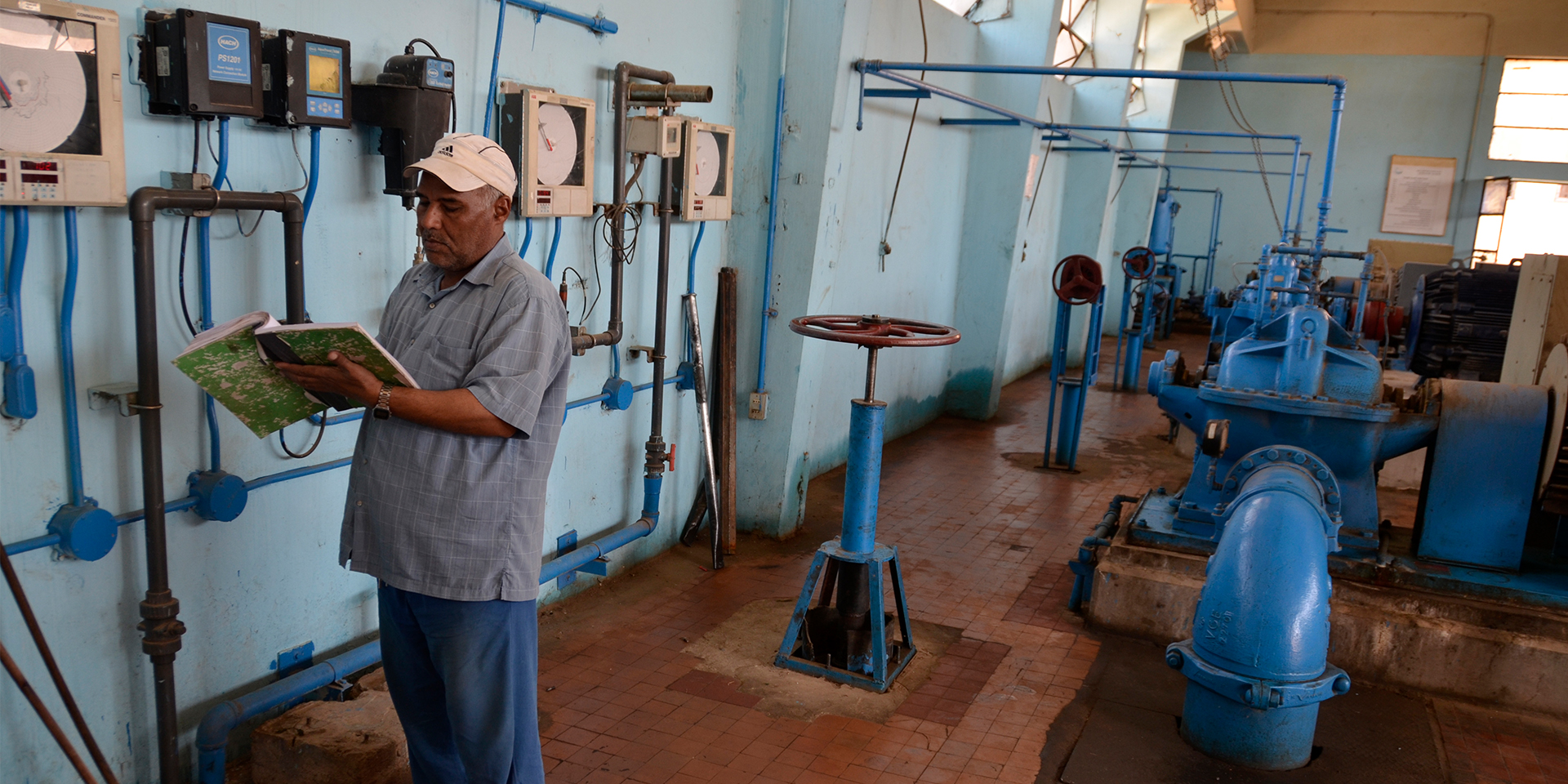
Developing Countries Can Leapfrog Today’s Urban Infrastructure
October 12, 2016 | 4 Minute ReadSolar water pumps like this one, built by USAID in Lebanon to accommodate an influx of Syrian refugees, can be a cost-effective and sustainable form of decentralized infrastructure.
At the foundation of every city are the physical systems that deliver water and power, dispose of solid waste and sewage, transport people and commodities, and transmit communications. Delivery of these basic infrastructure services to exponentially growing populations is a massive technological, financial, and governance challenge in cities of the developing world. However, the lack of basic infrastructure in developing cities also presents a huge opportunity to bypass the conventional infrastructure model of most developed cities, leapfrogging directly to the sustainable, inclusive, and resilient cities of the future.
Two overarching principles can help us take advantage of this opportunity and guide us to more sustainable, resilient, and inclusive cities: decentralization and integration. Decentralization and integration can revolutionize urban infrastructure by increasing access, reducing costs, managing risk, and fostering innovation.
Decentralization
Decentralized infrastructure is composed of similar pieces or “modules” operating independently of one another. Traditionally, decentralized infrastructure is found in rural areas where low population density does not justify the significant investment required for a centralized system, such as power lines or a network of pipes for water and sewage. However, decentralized networks are also well-suited for the dynamism and uncertainty of modern cities. First, decentralized infrastructure is resilient because one mishap or shock does not cripple the entire system. Because decentralized systems are modular, it is relatively easy and inexpensive to repair individual modules in the event of a natural disaster or simply to perform routine maintenance. For example, centralized wastewater networks often overflow during a flood, contaminating drinking water and the environment on a large scale. With decentralized wastewater treatment — including on-site treatment (e.g., composting toilets or water reuse systems) and clusters of mini-systems, a flood might cause a few modules to fail, but the contamination would be localized and the modules easy to repair or replace.
Adding modules to expand the infrastructure network or replacing modules with updated technology is similarly easy, making decentralized infrastructure inclusive and adaptive. Low-income and new urban residents can more easily access decentralized infrastructure services without waiting for large-scale investment plans to materialize. Likewise, replacing outdated infrastructure with updated technologies does not require a coordinated and centralized effort. The flexibility of adopting new technologies piecemeal fosters greater innovation as well. Look no further than mobile phones for an example of a decentralized technology: it has expanded communications access to billions of people in the developing world, and new mobile phone technologies appear on a daily basis. Compare that to landlines.
Other promising examples of decentralized infrastructure abound. On-site solar panels and mini-grid systems for electricity generation do not require large-scale transmission and distribution systems. For water supply, on-site rainwater collection and treatment, decentralized reservoirs, and water reuse can lighten the load of a centralized system, if not replace it entirely. In solid waste management, devolving responsibility for sorting recyclables, organics, and other waste to households (i.e., source separation) or micro and small businesses can create significant efficiency gains and promote economic growth.
Decentralized infrastructure raises several questions beyond the technical viability of a given technology. What is the government’s role in providing, regulating, and maintaining the infrastructure? What role do citizens, government, and private sector have in financing decentralized infrastructure? What changes in beliefs and behaviors are required for government and citizens? The answers to these critical questions will vary by technology and local context, but they must be considered during the design and piloting.
Integration
Not all infrastructure can be decentralized with technologies currently available. There is currently no decentralized alternative to a road, for example. But when planning centralized infrastructure, we must design for integration, multiple purposes, and redundancy. The conventional approach to infrastructure is siloed — water supply is separated from transportation, which is separated from power, which is separated from waste management. Given the extent to which these systems are mutually dependent and overlapping, an integrated approach creates synergies and efficiencies that make the whole greater than the sum of its parts.
Although we have a long way to go, examples of integrated infrastructure abound. Consider roads as an example. Roads can be made of more absorptive material to reduce storm water runoff and siphon it to freshwater reservoirs; they can include bus, bike, and reversible lanes to reduce congestion and greenhouse gas emissions; they can collect and transmit traffic and safety data in real-time; they can even collect solar power and melt snow. Other examples of integrated infrastructure include Singapore’s Active Beautiful Clean (ABC) parks that serve as flood protection, freshwater reservoirs, and recreational parks. The methane gas produced by landfill decomposition can be collected and used for power generation.
Integrated infrastructure poses challenges as well. It requires a high level of political will, coordination, and planning to integrate historically disparate systems. The up-front cost of integrated infrastructure can be another obstacle, although a full-cost accounting often reveals that the multiple long-term benefits are worth the up-front investment.
How do we get there?
Decentralizing and integrating infrastructure presents a tremendous opportunity to increase access, reduce costs, manage risk, and foster innovation, resulting in more sustainable, resilient, and inclusive cities. The global development community can lead the way in reconceptualizing urban infrastructure in the developing world by providing space and support to experiment, pilot, and scale these approaches.
This will not be easy. The challenges are complex and multifaceted, requiring a multidisciplinary approach to tackle issues of governance, finance, private sector engagement, and urban planning. More than anything else, meeting these challenges will require purposeful leadership, creative thinking, and collaborative design. With these principles in mind, we can help build the cities of the future.
